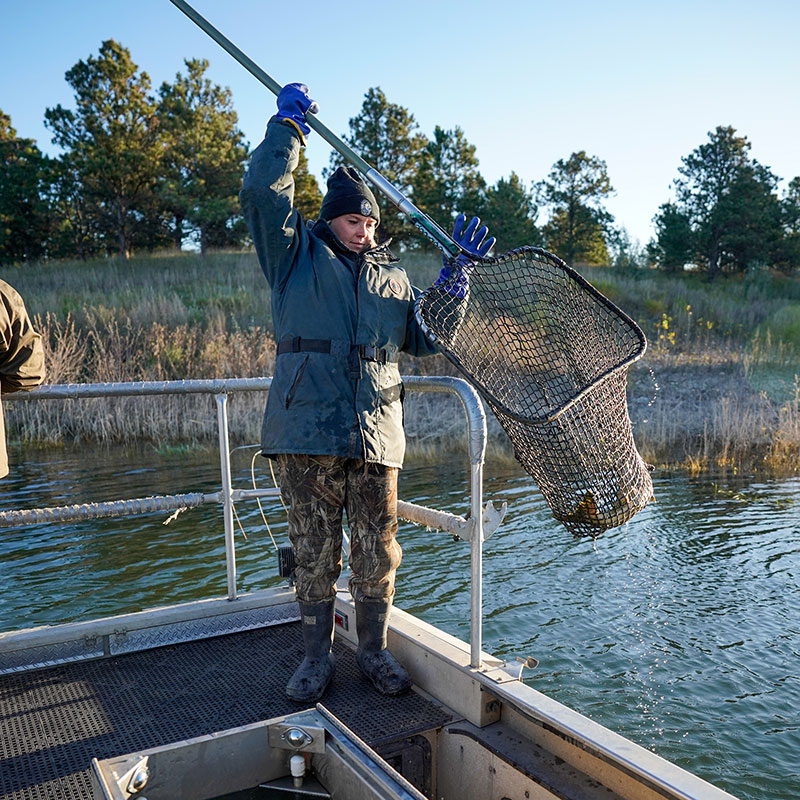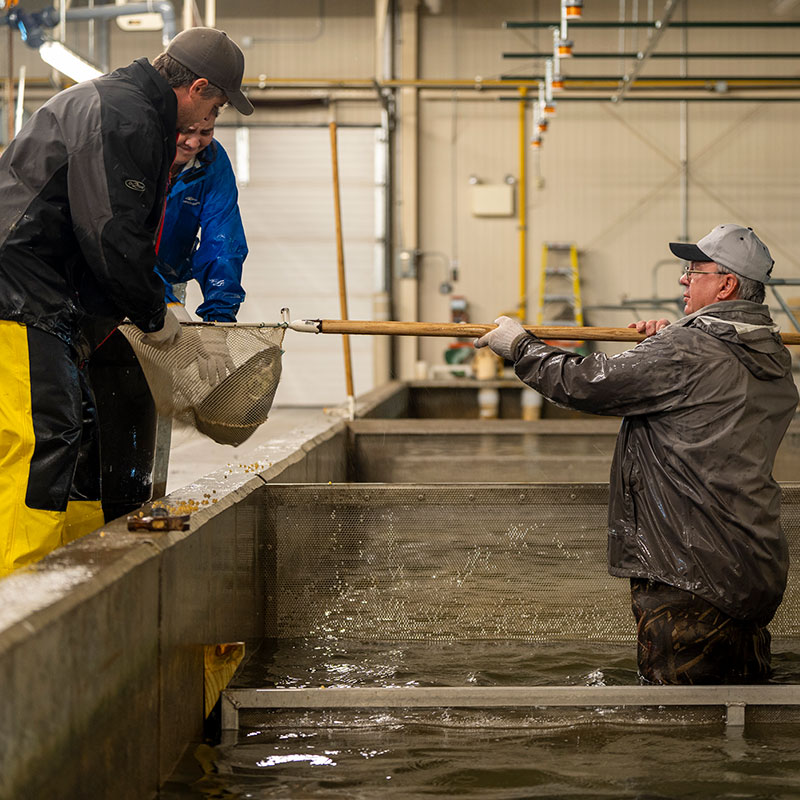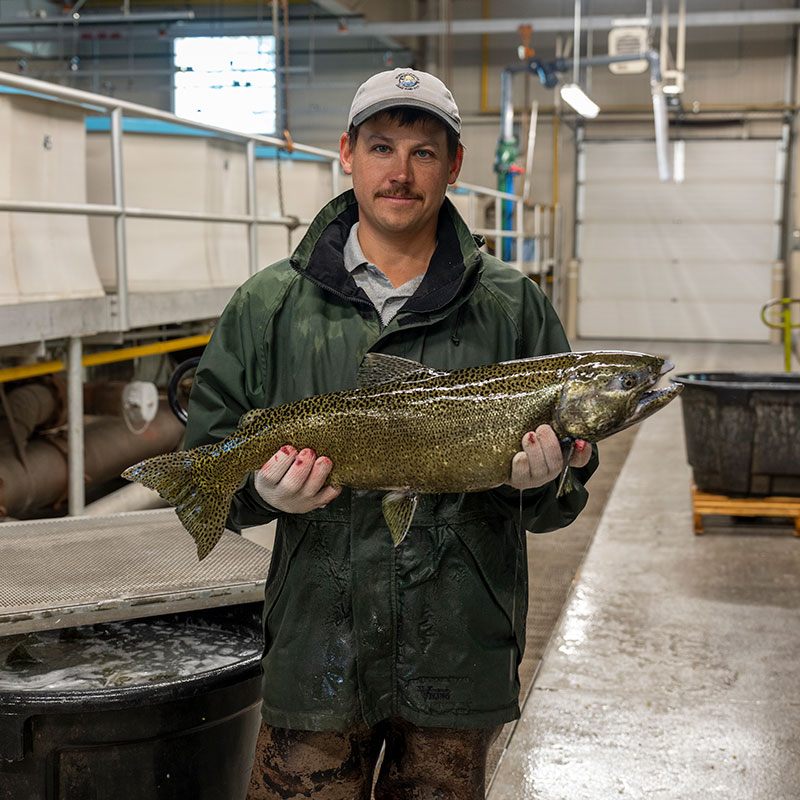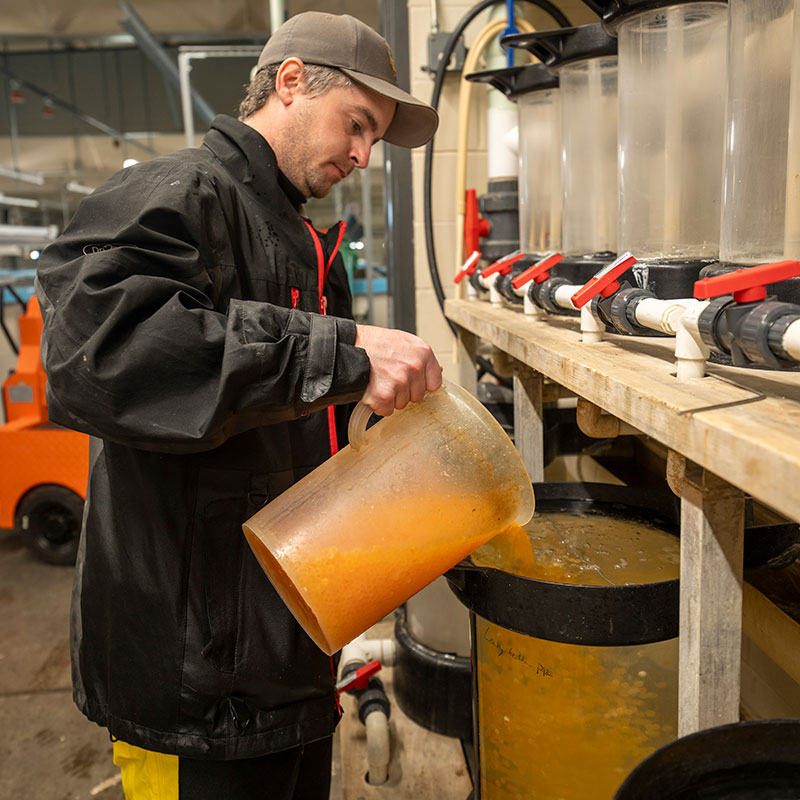
Shallow Water Gathering
Author: Ron Wilson
Chinook salmon were introduced into Lake Sakakawea nearly 50 years ago. Every fall, often starting sometime in October as daylight hours shorten, these fish head into shallow waters in an attempt to pull off the impossible, to naturally reproduce in an environment that simply doesn’t provide suitable habitat no matter how dogged the pursuit.
That’s where North Dakota Game and Fish Department fisheries biologists come into the picture. Armed with electrofishing equipment, biologists stun and then net the big lake’s salmon, with the goal of relieving the mature fish of their eggs and milt.
To sustain a Chinook salmon fishery in Lake Sakakawea, the annual not-by-chance meeting between fisheries biologists and the salmon in fall is imperative.
“This is a yearly event, a yearly project to continue the salmon fishing on Sakakawea,” said Zach Kjos, Missouri River System fisheries biologist in Riverdale.” If we didn't do this for three years, we wouldn't have salmon in the lake. They’d be gone.”
Reason enough, for certain, the two sides will meet again next fall.
Zach Kjos, Missouri River System fisheries biologist, said the average size of the Chinook salmon shocked and netted for the Department’s annual spawning operation averaged about 9 pounds, which is up from the 5- to 6-pound average the last couple of years. Kjos credits the salmon weight gain to a good prey species year-class in Lake Sakakawea. “This is what we get when we have a good cisco year-class … we get big salmon,” he said.
While fisheries biologists say that Chinook salmon can likely be found in Lake Sakakawea’s shallower waters any time after Labor Day, Game and Fish personnel don’t target these fish to rid them of their milt and eggs until October because that’s typically when their eggs are ripe.
The Game and Fish Department has a long and often admired working relationship with Garrison Dam National Fish Hatchery staff. The eggs are collected and hatched in the federal facility and then raised into 5-inch smolts that will be stocked into Lake Sakakawea in spring. The salmon egg goal this year was 1.2 million eggs. Fisheries staff reached that goal in mid-October.








